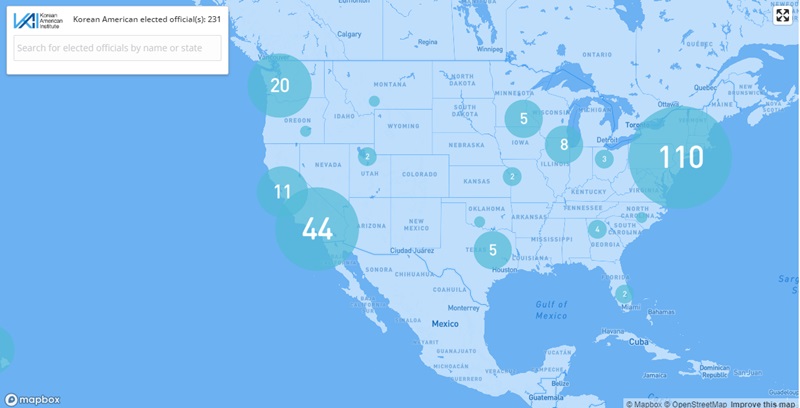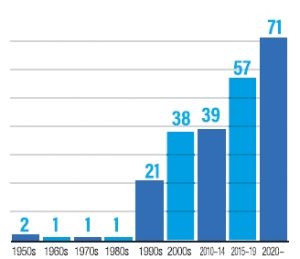The Korean American Institute (KAI), a nonprofit organization led by Mark Keam, recently released its annual report on Korean American political representation, which reveals a significant increase in the number of Korean American elected officials since the 2000s. Notably, the number of Korean American elected officials has surged by nearly 80% over the past decade, comparing the early 2010s to the early 2020s.
The history of Korean American elected officials dates back to the 1950s, with pioneers like Philip Minn and Robert Won Bae Chang serving in the Hawaii House of Representatives. In the following decades, Korean Americans secured elected positions at a slower pace, with one individual elected per decade during the 1960s, 70s, and 80s.
However, the number of elected Korean Americans grew significantly in the 1990s, with 21 officials, and further increased to 38 in the 2000s, marking a substantial rise in political influence. By the 2010s, this number had jumped to 96, with 39 elected between 2010 and 2014, and 57 between 2015 and 2019. This period is recognized as a pivotal time for the Korean American community’s political advancement.

In the most recent data from 2020 to 2024, 71 Korean Americans have been elected. With a growing number of 1.5 and second-generation Korean Americans entering politics, this figure is expected to surpass the totals from the 2010s.
Geographically, the majority of Korean American elected officials have emerged from areas with large Korean populations, such as New York and New Jersey (110 officials) and California (54 officials). Significant numbers were also elected in states like Washington and Oregon (21). Approximately 70% of the 231 Korean American officials elected over the past 70 years have come from these regions.
Interestingly, Korean American elected officials have also emerged in states with smaller Korean populations, including Francesca Hong (Wisconsin House of Representatives), Hoon-Yung Hopgood (Michigan State Senate), Mario Benavente (Fayetteville Council in North Carolina), and others in Connecticut, Montana, Nevada, and Oklahoma. Notably, Missouri has seen two Korean Americans elected, John Patterson and Emily Soo Weber, to its State House.

Steve Kang, recently appointed as a commissioner for the LA Board of Public Works, remarked, “As the history of Korean immigration grows, so does our political power. The increasing participation of the 1.5 and second generations has led to more electoral victories.”
He also noted the unique trend of Korean Americans winning elections in predominantly White rural areas, such as Oklahoma, calling this a positive development for broader representation.
According to KAI’s report, the first Korean American member of the U.S. House of Representatives was Jay Kim (1993-1999). In 2019, Andy Kim began his term in Congress, followed by female representatives Michelle Steel, Young Kim, and Marilyn Strickland in 2021. Andy Kim is now aiming to become the first Korean American U.S. Senator in the upcoming November election.
The first female Korean American elected official was Eleanor Kim Chow, who served on the Montebello Unified Board of Education in California from 1970 to 1993. Donna Mercado Kim held various positions in Hawaii’s government, including terms in the state legislature and Honolulu City Council.
Sylvia Luke became the first Korean American to hold a high-ranking state government position in 2022 as Hawaii’s Lieutenant Governor, while Ronald Kim became the first Korean American mayor, serving Saratoga Springs, New York, from 1992 to 2000.
BY YOUNGNAM KIM [kim.youngnam@koreadaily.com]




